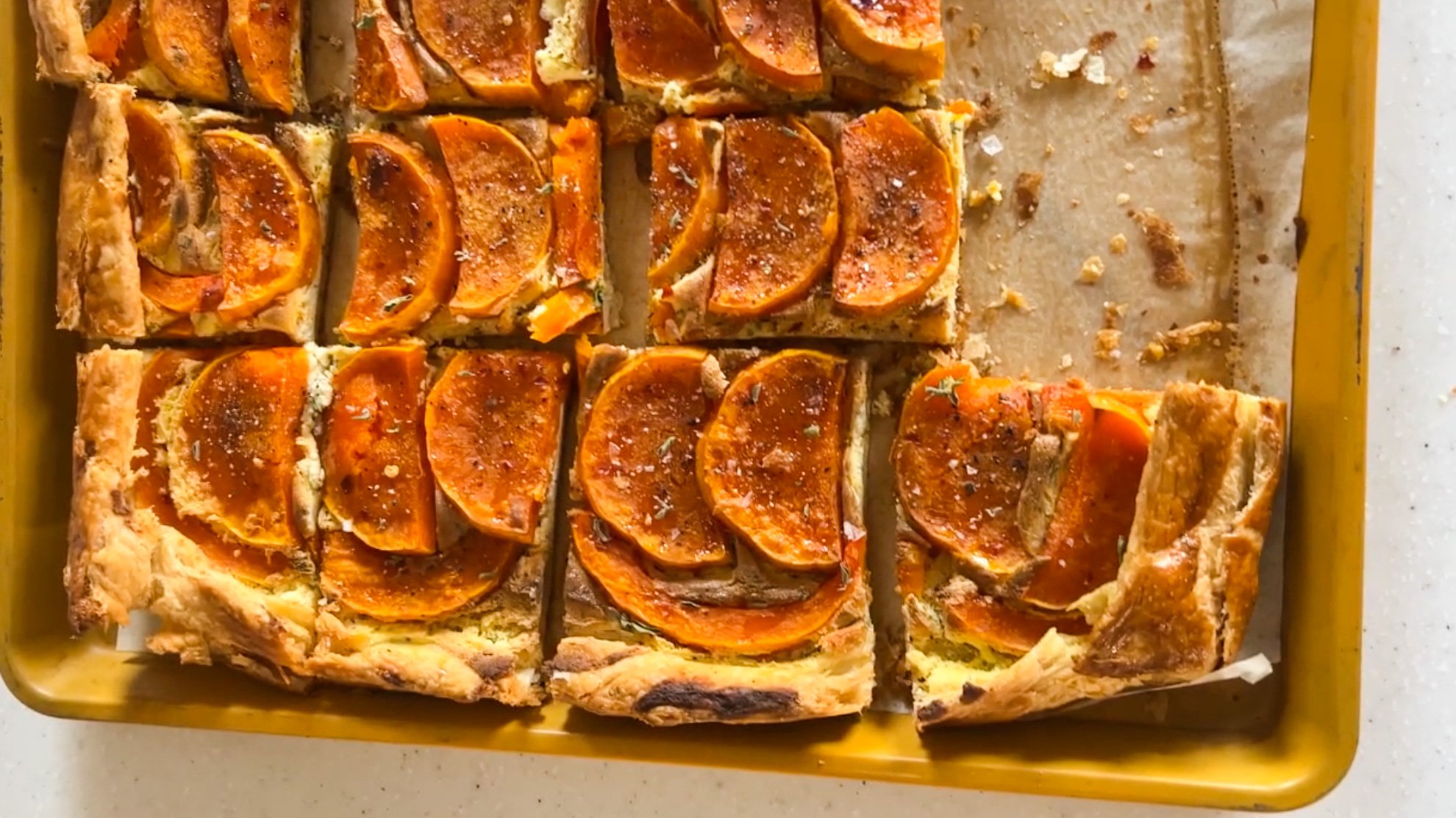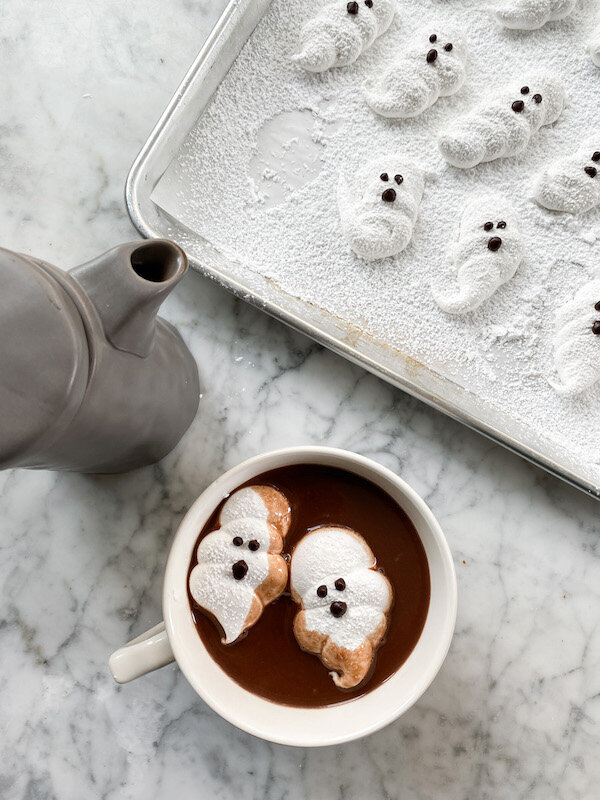Honey Cream Puffs
This treat has lovely contrasting textures - starting with the crisp, golden pate a choux that’s filled with silky, creamy honey pastry cream. In this recipe, I’m using Wholesome Organic Fair Trade Raw & Unfiltered Honey inside both the puffs and the delicious pastry cream used to fill them. I love this pure multifloral honey and the beautiful color and sweetness it contributes to my recipes! These cream puffs look super fancy, but are surprisingly simple to make, and make a sweet baking project that’s fun to serve - or even to gift! #AllTheBest from my kitchen and Wholesome!
This recipe was created in partnership with Wholesome.
Makes 9 large puffs
Honey Pastry Cream Filling
1 ½ cups (175 g) whole milk
1/3 cup (28 g) cornstarch
1/2 cup (113 g) Wholesome Organic Fair Trade Raw + Unfiltered Organic Honey
¾ teaspoon (3 g) fine sea salt
6 large (130 g) egg yolks
2 tablespoons (28 g) unsalted butter
2 teaspoons (10 g) vanilla extract or 1 teaspoon (5 g) vanilla bean paste
Cream Puffs
½ cup (115 grams) water
½ cup (115 grams) whole milk
4 tablespoons (57 grams) unsalted butter
1 tablespoon (21 g) Wholesome Organic Fair Trade Raw + Unfiltered Organic Honey
1 teaspoon (4 g) fine sea salt
1 ½ cups (180 grams) bread flour (or all purpose flour)
5 large (280 grams) eggs (have 1-2 extra eggs on hand)
Egg wash, as needed for finishing (1 large egg + 1 tablespoon water mixed to combine)
Wholesome Organic Fair Trade Powdered Sugar, as needed for finishing (optional)
1. Make the Honey Pastry Cream Filling: in a medium pot, whisk the cold milk and cornstarch until well combined. Add the honey and salt and mix to combine. Heat this mixture over medium heat until it is warm and steamy - it doesn’t even need to simmer.
2. While the milk heats, whisk the egg yolks in a medium heat-safe bowl. Add about half of the warm milk to the bowl and whisk well to combine.
3. Return this mixture to the pot with the rest of the milk and honey and heat over medium-low heat, stirring constantly, until the mixture thickens and fat bubbles begin to break the surface of the custard. 3-5 minutes.
4. Remove the pot from the heat, and stir in the butter and vanilla until well combined. Strain the custard through a strainer into a medium bowl, cover the surface directly with plastic wrap, and refrigerate until well-chilled, at least 2 hours and up to 2 days.
5. Make the cream puffs: in a medium pot, bring the water, milk, and butter to boil over medium heat. Add the flour to the boiling liquid all at once, stirring constantly with a silicone spatula or wooden spoon.
6. Reduce the heat to low, and continue to cook, stirring constantly, until the mixture becomes a slightly sticky paste - it should form a ball around the spatula/spoon as you stir. There should also be a visible film of starch on the bottom of the pan - this should take 2-3 minutes.
7. Transfer to the bowl of an electric mixer fitted with the paddle attachment (see note to use a hand mixer or mix by hand). Mix on low speed for 1 minute to cool the mixture slightly.
8. Whisk the eggs together in a large liquid measuring cup. With the mixer running on medium speed, add the eggs in slow, steady stream and continue mixing until fully incorporated 4-6 minutes.
9. Test the consistency of the batter by dipping the paddle into the batter and lifting it up. The batter should form a V shape that eventually breaks away from the batter in the bowl. If the dough is too stiff or pulls away too quickly, you need to add more eggs. Add the extra egg in a slow, steady stream to loosen the consistency.
10. Line a baking sheet with parchment paper (it’s ok to divide the puffs between two lined trays if you prefer. Place the pate a choux in a pastry bag fitted with a large round tip. If desired, pipe a small amount of pate a choux at the corners of the parchment paper to help keep it in place while you work.
11. Hold the pastry bag straight up and down above one of the baking sheets and pipe 2 inch mounds of pate a choux onto the baking sheet, spaced at least 1 inch apart, and staggering the rows as you pipe. As each round nears the correct size, release the pressure on the bag and use a quick flick of the wrist to help break the connection between the dough and the pastry tip.
12. Use a fingertip dipped in cool water to smooth the edge where you finished piping, if desired. Let the puffs sit at room temperature for 15-30 minutes.
13. Preheat the oven to 375°F. Bake the cream puffs until the choux is golden brown and crisp, 35 to 40 minutes. Cool the puffs completely.
14. When you remove the choux from the oven, immediately use a paring knife to poke a small vent into the side of the eclairs to allow steam to escape (this will help to keep them crisp). Cool completely.
15. Transfer the chilled pastry cream to a pastry bag fitted with a large round or Bismarck pastry tip.
16. Insert the tip into the base of the cooled puffs and fill with diplomat cream until they feel heavy and full. Repeat with the remaining puffs. Keep chilled until ready to serve, and serve within 8 hours.
Note:
-To mix with a hand mixer: transfer the mixture to a heat safe bowl in step 3, then use a hand mixer to incorporate the eggs.
-To mix by hand: transfer the mixture to a heat safe bowl in step 3, then use a hand mixer to incorporate the eggs.







